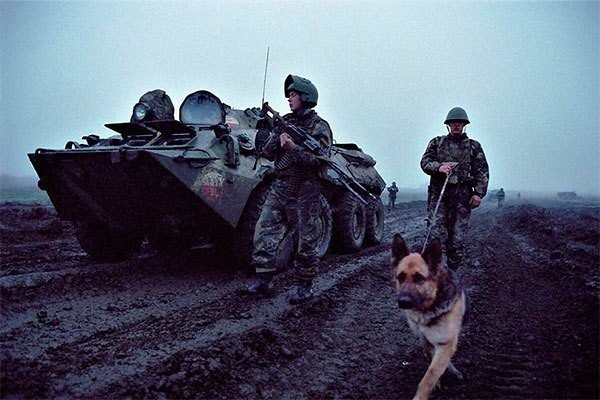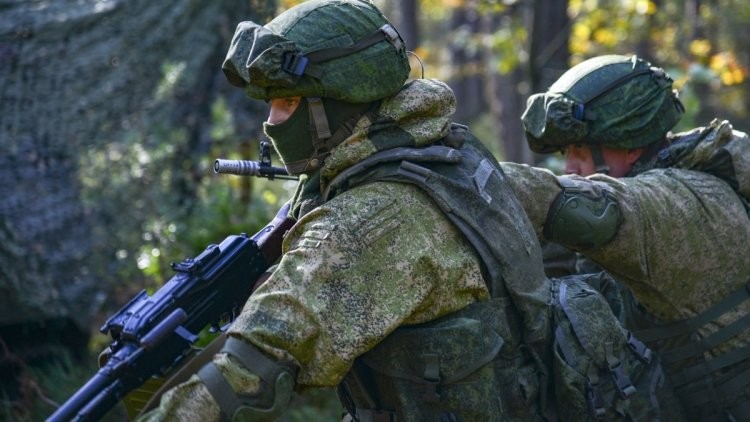
The Russian media reported on the possible replacement of the domestic intermediate cartridge 5.45x39 mm with a larger caliber. Today we will discuss, what are the advantages and disadvantages of the existing Russian ammunition and their foreign counterparts.
on the eve, 5 February, information appeared in the media, that the Russian army can abandon the intermediate cartridge 5.45x39 mm in favor of the modernized rifle cartridge 7.62x54 mm. This information was later denied., however controversy, which of the two calibers is preferable, do not subside for decades and continue in the future. Today we will try to understand the merits and demerits of each of the candidates and determine, which one is better for the Russian army.
The first assault rifle in history is considered to be a "gun-machine gun" designed by the Russian gunsmith Vladimir Fedorov sample 1916 of the year. The designer initially began to implement his idea of creating a rapid-firing self-loading rifle on the basis of the legendary Mosinka. In this regard, the first sample used a cartridge 7.62x54 mm R (welted), that very, which is used in the Russian army today.
Even then, Fedorov outlined the main problem in the development of assault rifles - the lack of a suitable cartridge. All the leading armies of the world used either rifle, or pistol. The first ones very quickly smashed the mechanisms of automatic weapons, and the latter, on the contrary, did not have the necessary destructive power. In this regard, Fedorov began developing his own intermediate cartridge.
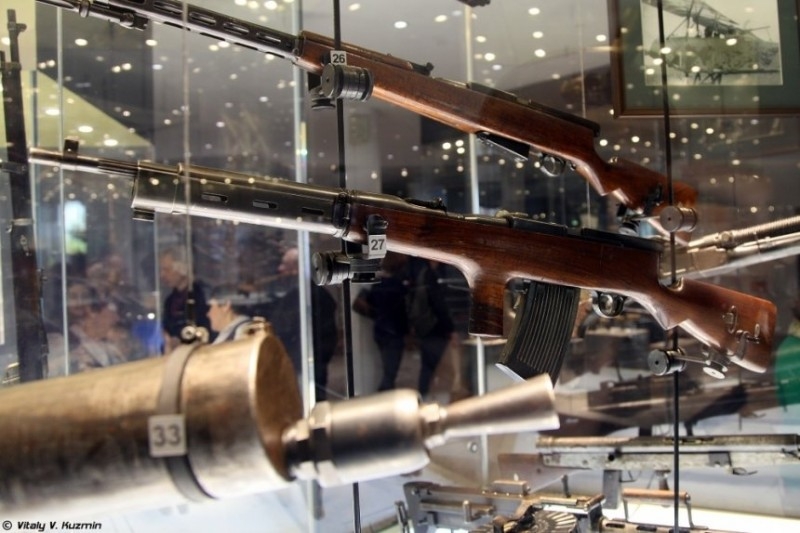
Source photo: wikipedia.org
But there was one catch, the designer conducted his research on a private initiative and did not have money even for small-scale production. He found a way out in the use of a 6.5x50 mm cartridge for the Arisaka rifle.. This weapon was purchased by the Russian Empire from Japan during the First World War., and with them - large stocks of ammunition.
The Japanese cartridge perfectly suited Fedorov and fully met his requirements.. It was less powerful, 3100 kJ versus 3700 kJ, and the sleeve had no welt, protruding flange. The latter was especially important, because exactly the welt did not allow the supply of cartridges from a bulky box magazine. So, if in versions for 7.62x54 mm R the ammunition of the "gun-machine gun" was only 5 rounds, then with Japanese ammunition the volume increased to 25.
Already under Fedorov, a tendency was laid to create a full-fledged intermediate cartridge for machine guns. Still, the era of assault rifles began only at the end of World War II., after almost 30 years after the invention of the "machine gun". German gunsmiths were pioneers in this matter., developed the cartridge 7.92x33 mm. It was a shortened copy of the 7.92x57 mm rifle, which allowed the German industry to easily establish the production of new products.
Soviet engineers followed a similar path, "Cutting off" the domestic rifle cartridge and removing the welt from the sleeve. It would be logical to remove the welt from the rifle cartridge itself., but at that time, such a massive rearmament of the army was considered an unnecessary burden on the budget.
At the same time in the USA, created a 7.62x51 mm NATO cartridge, naturally, without ranta. He was not considered intermediate, but designer Eugene Stoner, creator of the famous M16, decided to develop his AR-10 assault rifle (prototype M16) exactly for him. The decision was unusual, because the rest of the armies of the world have already switched to weapons for less powerful ammunition.


Trump announced the creation of the modern anti-missile system
Source photo: wikipedia.org
Already on tests, the same defect was revealed, what was still in Fedorov's assault rifles - the rifle cartridge quickly destroyed the mechanics of the weapon. In return, the US Army adopted the M14 self-loading rifle., also under 7.62x51 mm NATO.
However, the next step of American designers was gigantic - they did not just shorten the rifle cartridge, and also reduced the caliber. As a result, 5.56x45 mm NATO appeared. This decision was dictated by combat experience..
So, rifle cartridges were created for a distance of up to 2000 m, while fighters, armed with machine guns, fought at a distance 100-300 m. In such a situation, the power of rifle ammunition was extremely excessive., at the same time negatively affected the accuracy of fire, made weapons less reliable, as well as rifle ammunition weighed significantly more than intermediate.
But, as noted, if other gun schools simply "trimmed" existing rifle ammunition, while maintaining the caliber, then the American gunsmiths significantly reduced and lightened the bullet. This decision caused a lot of controversy., but real experiments have shown the benefits of such a solution. In this regard, the USSR developed a cartridge 5,45x39 mm, and also launched the AK-74 assault rifle under it.
The new bullet has significantly increased the range of direct fire, flatness and reduced recoil force. These factors immediately had a beneficial effect on the accuracy and accuracy of the machine.. Besides, the development of metallurgy made it possible to create compact armor-piercing bullets, which were superior in penetration to intermediate 7,62 mm. Another bullet feature 5,45 mm - unstable behavior when hitting the target, leading to serious injuries.
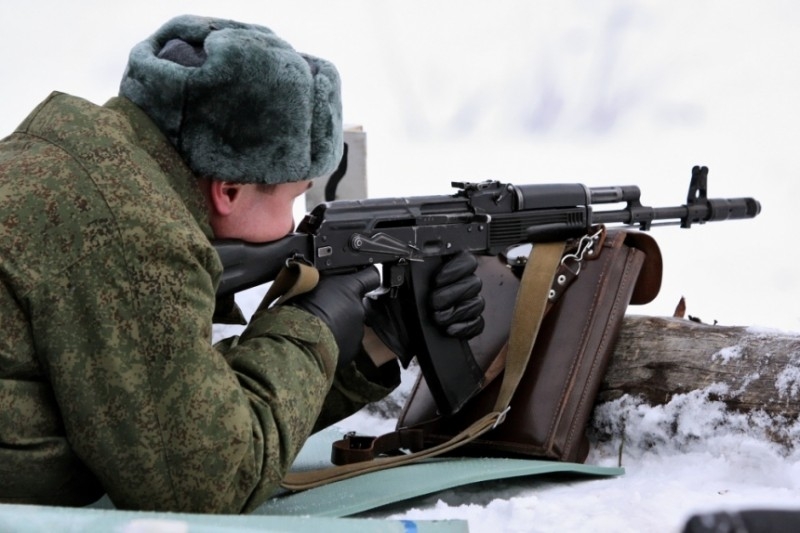
Source photo: wikipedia.org
As seen, the existing 5.45x39 mm cartridge has many advantages, especially when it comes to so-called linear parts. A fighter, even with low combat training, can conduct relatively accurate fire, and misses can be compensated for by the density of fire, because the smaller the cartridge, the more you can take with you.
However, standard rifle ammunition also has its advantages - effective fire range, armor penetration and monstrous stopping effect, from 7.62x54 there are practically no light wounds. Naturally, that the military would not want to give up such advantages, but it's perfectly clear, that a weapon chambered for such a cartridge will be effective only in the hands of professionals.
So, assault rifle FN FAL, originally created under the NATO intermediate patron, was soon modified for a rifle-machine gun .308 NATO. It was in this version that this weapon received the nickname "the right hand of the free world" and became one of the most popular in the world. In the early 2000s, the Belgians went further and created the FN SCAR - an assault rifle for special forces as an intermediate, and under rifle ammunition.
Russian gunsmiths gave their answer in the form of an AK-308 machine gun. As the name suggests, it was created for the civilian version .308 NATO. The domestic rifle cartridge did not fit because of the very welt. obviously, that the existing version of the AK-308 was created for commercial purposes, however, on its basis, it is quite possible to develop weapons for a new domestic rifle cartridge. Especially, there is a demand for such weapons in Russian special forces.
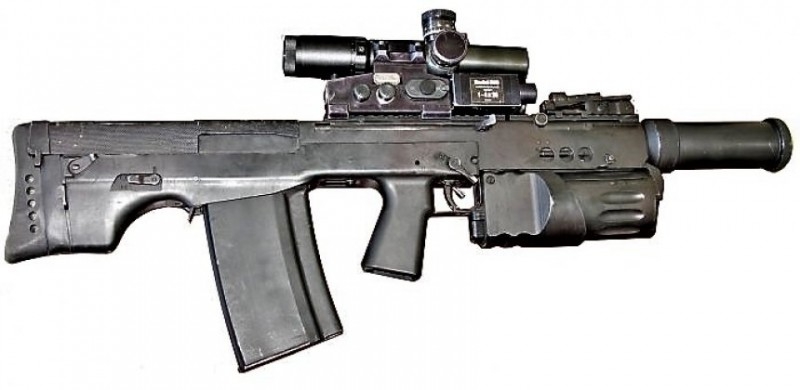
Source photo: wikipedia.org
for example, from 2011 year, the army receives the assault machine ASh-12 under a special large-caliber cartridge 12.7x55 mm SC-130. Despite the caliber, the weapon is designed for close combat. Syrian experience shows, that special forces in any army need weapons to conduct effective combat in desert regions, where the combat distance increases significantly.
Anyway, the existing cartridge 7.62x54 mm R is not suitable for new machine guns, he needs a replacement. This means, to re-equip the Russian army with a new caliber, it will be necessary to replace not only machine guns, but also all ammunition, otherwise, three mass cartridges will appear in the linear parts, which is extremely detrimental to the entire logistics system. In this way, if an analogue of FN SCAR-H appears in our army, then it will also be intended exclusively for special forces. But the rejection of the 7.62x54 mm R cartridge is inevitable, the only question is, will this transition simply to a flangeless analog, or a much more serious step and the development of fundamentally new ammunition.







